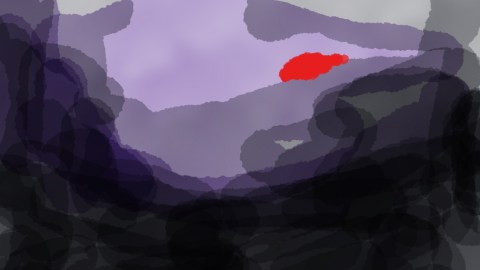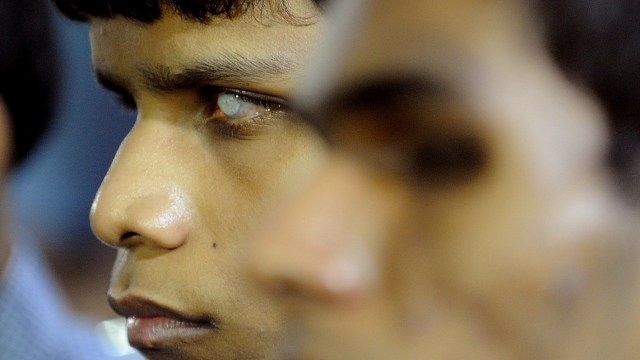Dark Medicine: Thoughts on Hanya Yanagihara’s ‘A Little Life’

Crying is its own special kind of moral argument. Many years ago when I was an undergrad at NYU’s acting school, we were all awestruck by the first few students who cried real tears during a scene or an improv exercise. After President Barack Obama’s recent speech on gun control, the covers of the two main New York tabloids featured close ups of his tear-streaked face. And on the back cover of Hanya Yanagihara’s new book A Little Life, a prominent critic is quoted as saying that it’s one of the only novels she’s ever read that reduced her to tears. Crying, or admitting to having cried about something, is another way of saying that a particular book or idea or event was somehow singular and powerful enough to penetrate your defenses and self-involvement, forcing you to drop everything and face it wholly.
But crying exposes and embarrasses us, too. So once the gravitas wears off, public acts or admissions of crying can provoke an eye-rolling backlash — accusations of showboating or spinelessness. Real tears mean something, but as a public statement, they can backfire.
This is all by way of prelude to saying that Yanagihara’s A Little Life made me cry more than once, for reasons that I think make it one of the deepest, most morally resonant novels I’ve ever read. Up there in the mental canon alongside The Brothers Karamazov.
One of the most common refrains in reviews of the book is the idea that it’s painful or grueling to read because it deals with deeply uncomfortable subjects. That’s not inaccurate, but it’s beside the point. While the book is completely engrossing and beautifully written, it’s difficult in the way that picking up the scalpel and making an incision in that first cadaver must be for medical students. Difficult but necessary. Yanagihara puts Jude (arguably the book’s main character) through tortures and self-tortures no human should have to endure. Real humans do endure torture, though, often silently and alone — and in writing unflinchingly about Jude’s experience Yanagihara is practicing (and teaching her readers) the most difficult kind of compassion. The kind that refuses to look away no matter how bad things get.
From his early childhood and adolescence (which is revealed progressively in flashbacks) through middle age, Jude survives a relentless series of amputations, physical and figurative. He survives not because life is great or brighter days are just around the corner, but because his mind and body compartmentalize and compensate for the losses, sometimes in horrible ways. For example, he’s what popular psychology calls a cutter. He slices up his forearms with razorblades in a (usually) tightly controlled nighttime ritual. At the same time, he becomes a formidable corporate attorney because in that sphere he has total control over his identity. His past is irrelevant — all that matters to the firm is his ability to bring in clients and his efficacy in the courtroom. And when Jude’s powerful survival mechanisms (the cutting, the workaholism) fail, his close-knit group of friends and adoptive family rises up like an immune response to protect him — to keep him alive even against his determined will to die.
In striking contrast to the sentimental survival narratives that drive pop culture these days, stories in which people overcome all obstacles in order to become their true, amazing selves, A Little Life presents survival as a raw biological imperative that’s almost impossible to escape. Life won’t let you go; not because brighter days are right around the corner, but because it just won’t.
The second thing A Little Life is mainly about is friendship. How real friendship, like real life, takes many surprising forms. Having survived his meat grinder of a childhood, college freshman Jude meets Willem, Malcolm, and JB. For the next three decades, until some things happen that I’d better not disclose, their lives remain deeply intertwined. Friendship — one friendship especially — is the defining feature of Jude’s adult life, so much so that he almost becomes part of a larger biological system. This is what pop-psychology likes to call co-dependence, and Yanagihara refutes this charge explicitly. Why, Jude wonders at one point, does psychology construct these models of normalcy and attempt to force real life to conform to them? By what right does it label certain patterns of behavior “pathological” outside of the mitigating and infinitely varied circumstances of individual lives? In other words, who are they to tell me what it is I need to survive?
The third and final thing the book is about, in a sense the effect for which it seems to have been engineered, is empathy. Not the kind that smiles condescendingly and sends flowers, but the kind that’s there for you when the phone rings at four in the morning. The book draws you in and forces you to face how singular a human life can be — how utterly different from yours or any other.
Hence the weeping: Reading the book, I was hit full force with Jude’s little life and reminded of how very little I ever see of anything outside of myself. How little anybody sees. That’s captured in the triple-entendre of the title, too: literally, it’s a dark reference to one of Jude’s most terrible memories (another one I’ll leave it to the reader to discover). But it’s also about how few things any one person really lives for. And the inverse of that — the tunnel vision only unconditional love, life-changing trauma, and experiences like reading this book can break through.
—
@jgots is me on Twitter
You might also like our podcast, Think Again, where we surprise smart people with unexpected ideas. Salman Rushdie, Maira Kalman, George Takei, Maria Konnikova, Henry Rollins, Bill Nye, Sam Harris and more have been on.




